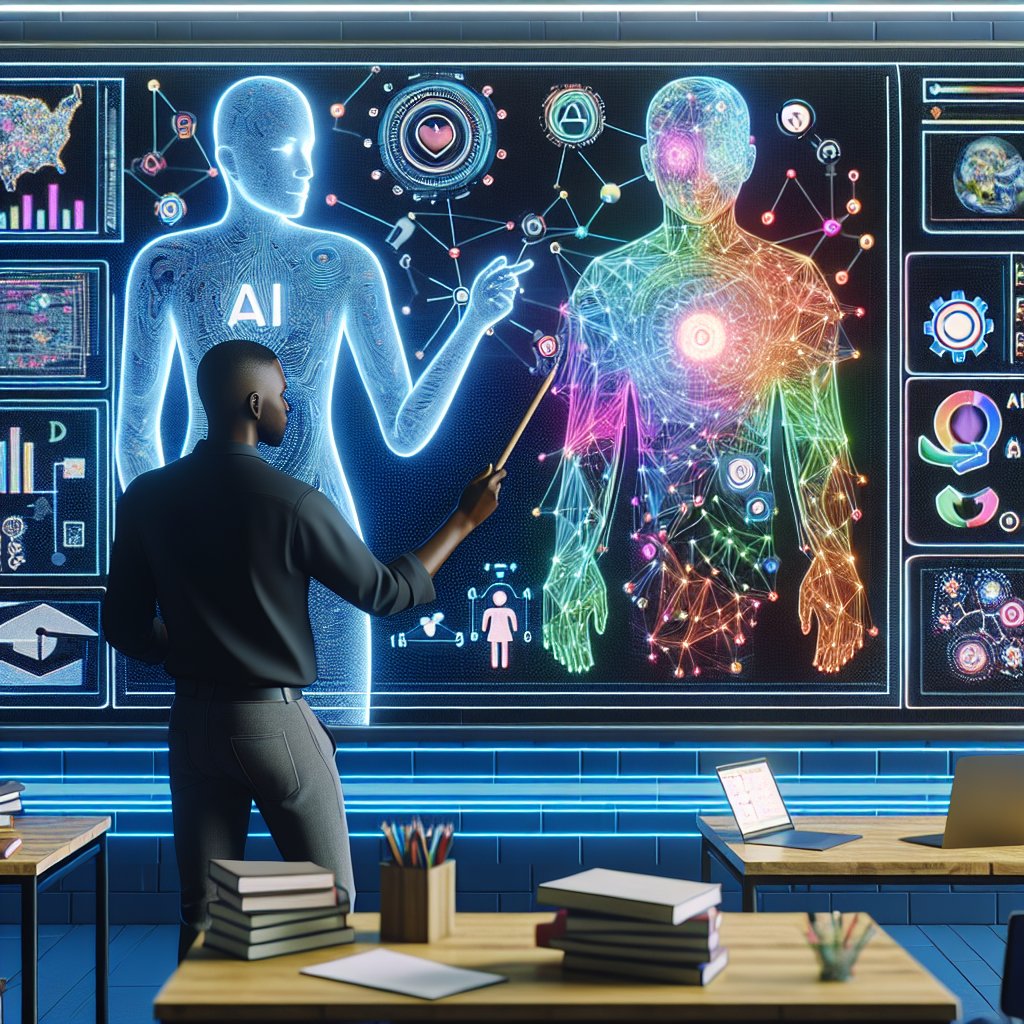Revolutionizing Education: How AI Is Transforming Teacher Workloads with Automated Question Generation
Imagine a world where teachers can craft engaging, subject-specific, and mind-challenging questions without spending countless hours scouring through educational materials. Sounds too good to be true? Thanks to advancements in Artificial Intelligence, this dream is becoming a reality. Enter the world of Topic-Controlled Question Generation (T-CQG), a pioneering approach designed to generate topic-specific questions automatically, revolutionizing the educational landscape.
The Quest for Educational Efficiency
In today's fast-paced world, teachers are superheroes battling an ever-growing list of tasks. From lesson planning to grading, the workload is often overwhelming. The Global Report on Teachers predicts that by 2030, a staggering 44 million additional teachers are needed to achieve universal primary and secondary education. This is a call to action for innovative solutions that can ease the burden on our educators.
That's where Topic-Controlled Question Generation comes into play. When it comes to automatic question generation, many attempts have fallen short due to the generic nature of the questions produced. But T-CQG changes the game by ensuring questions are not only grammatically correct but also contextually relevant, tailored to specific educational topics.
Breaking Down the Magic: How T-CQG Works
The Nuts and Bolts of T-CQG
Pre-trained Language Model T5: The backbone of the T-CQG approach is the T5-small model, a pre-trained language powerhouse. Think of it as the AI equivalent of a Swiss army knife, versatile and primed to be finely tuned for generating educational questions.
Semantic Precision: Simply put, this approach ensures the questions fit like a glove when paired with the educational content. It focuses on semantic relatedness, ensuring that generated questions align with the topic and context of the learning material.
Novel Datasets: The innovation doesn't stop at the technology itself. The researchers introduced new datasets, like MixSQuAD and MixKhanQ, enriched with educational contexts and topics. This means the model isn’t just well-fed with data; it’s dining on gourmet educational content specifically designed for its task.
Ensuring Quality and Precision
Quality is king, especially in education. This is why T-CQG has undergone human evaluations to ensure it isn’t spitting out gibberish but rather meaningful, well-structured questions. The evaluations use reliable metrics like BERTScore and WikiSimRel to judge just how well the AI-generated questions stack up against human standards.
Practical Implications: A World of Possibilities
Superpowers for Teachers
One of the most exciting prospects of T-CQG is its potential role as a teacher's assistant. Imagine a digital tool that drags out complex topics from a presentation or video, morphs them into questions, and presents them to teachers for approval. This allows educators to remain the final gatekeepers of quality while significantly cutting down on the legwork involved in question crafting.
Personalized Learning on Steroids
T-CQG isn't just a timesaver—it’s a stepping stone toward personalized education. Integrated into Learning Management Systems (LMSs) and Intelligent Tutoring Systems (ITSs), it can help identify students’ knowledge gaps and tailor questions that matter. It’s a move toward individualized learning paths, where each student can get the attention and resources they need, precisely when they need them.
Scalable Solutions for Every Classroom
Beyond individual classrooms, T-CQG holds the promise of bringing educational equity to resource-limited environments. With models that can run on minimal infrastructure, even schools with limited internet access could benefit from cutting-edge AI capabilities. This could make personalized learning experiences accessible to students globally, including in low-income regions.
Beyond Questions: The Future Is Bright
While the focus here is on question generation, the methodology has broader applications. Whether it's generating feedback, crafting summaries, or providing detailed explanations, AI can redefine what’s possible in educational technology. Imagine AI that doesn’t just provide answers but crafts intricate learning experiences unique to each student’s needs.
Key Takeaways
- Transformational Tool: T-CQG promises to lighten educators' load by automatically generating relevant, topic-specific questions.
- Custom Learning Journeys: Embedded into educational systems, it can facilitate adaptive learning, ensuring students receive tailored educational experiences.
- Scalable Excellence: With quantization techniques making AI models smaller and more cost-effective, T-CQG can be deployed in diverse settings, pushing the boundaries of what AI can achieve in education.
- Future Ready: While T-CQG starts with question generation, its principles could soon redefine how educational content is created and delivered globally.
In short, T-CQG isn't just another tech buzzword—it's a tangible leap toward an educational future where teachers focus on what they do best: inspiring and teaching, while AI handles the grunt work of question generation. With capabilities to ease workloads, tailor learning, and operate within resource constraints, this intelligent system is setting the stage for a new era of education innovation.

